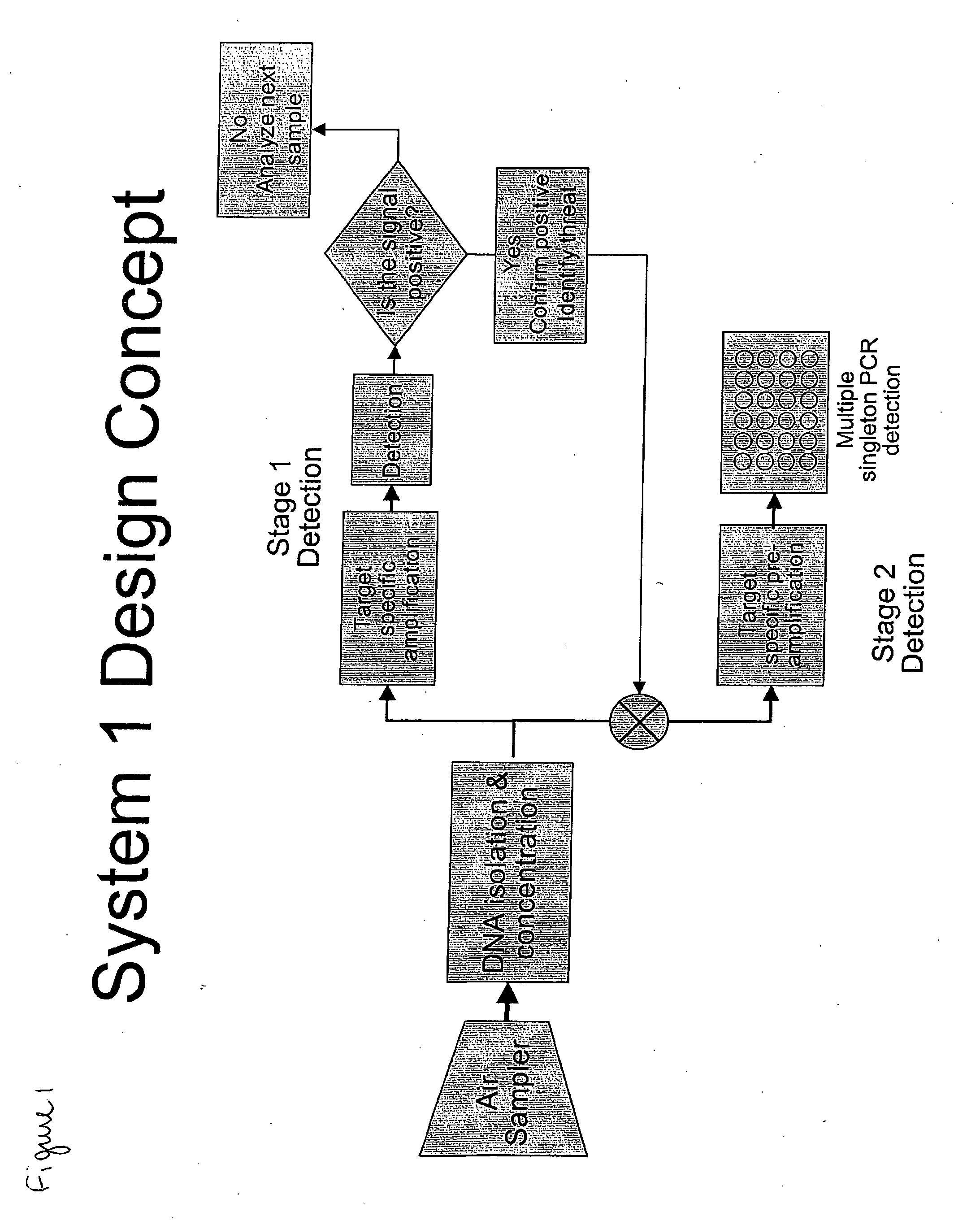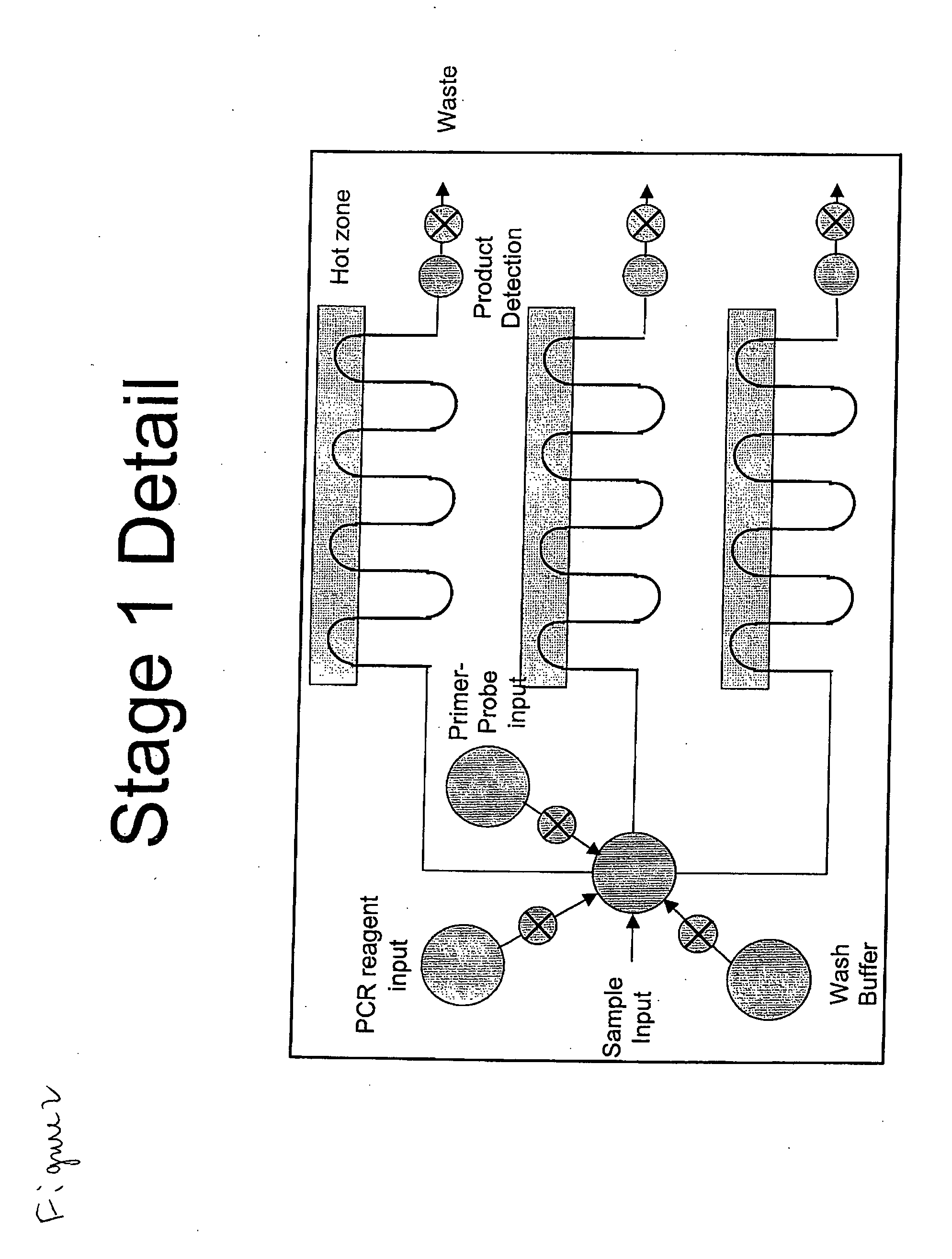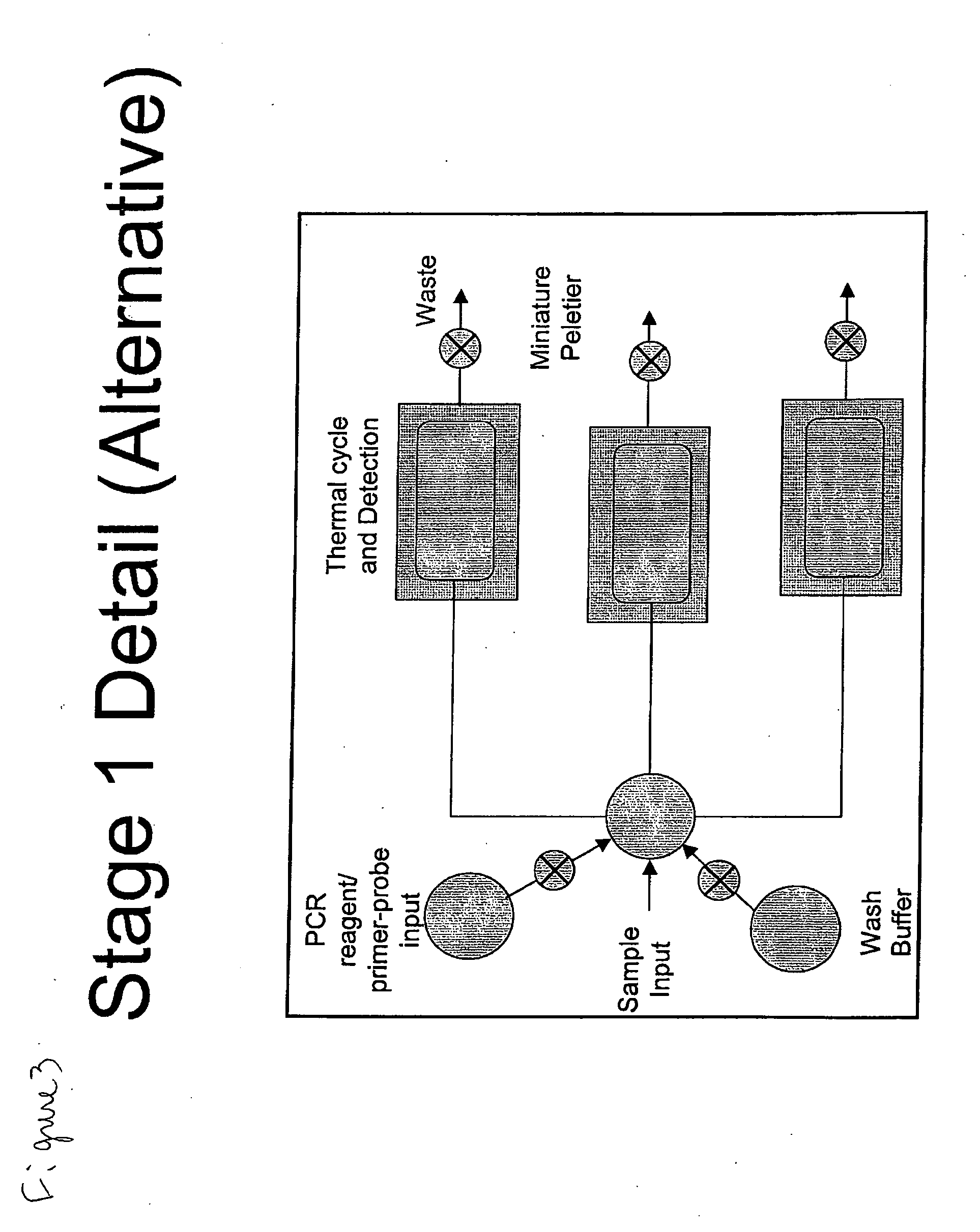System for the Detection of a Biological Pathogen and Use Thereof
a biological pathogen and detection system technology, applied in the field of biological pathogen detection systems, can solve problems such as inadequate detection methods of pathogens, and achieve the effect of rapid and sensitive detection of target analytes
- Summary
- Abstract
- Description
- Claims
- Application Information
AI Technical Summary
Benefits of technology
Problems solved by technology
Method used
Image
Examples
example 1
Screening and Validation
To test the specificity of a primer design strategy for pathogen detection and to examine the influence of multiple targets as well as various environmental water matrices on the quantitative capacity of Real-Time qPCR analysis on the OpenArray™ platform, DNA samples from 20 waterborne pathogens were interrogated against 110 assays (SYBR Green I primer pairs) designed to target agent's virulence and marker genes.
Real-Time PCR performance uniformity on the OpenArray™ platform was detected by conducting loading of 3072 through-holes with identical primer pair / sample combination. The experiment included three OpenArray™ plates cycled in parallel, resulting in 9216 data points. The data obtained from this experiment indicated highly reproducible Real-Time PCR on the OpenArray™ platform. The standard deviation calculated across over 9000 data points was 0.11 Ct for 1000 target copies / through-hole, and 0.21 Ct for 100 copies / through-hole (FIGS. 8A and 8B).
Validated...
example 2
Assay Sensitivity and Specificity
Assay sensitivity and specificity were determined by detecting genomic DNA from a single organism individually and in a mix of DNA from 4 or 8 organisms. Real-Time PCR performed on the OA™ platform allowed detection of targeted regions of Vibrio cholerae, Legionella pneumonia, Cryptosporidium parvum and Staphylococcus aureus DNA samples, isolated from pure culture as well as from a mixture of four or eight pathogens (FIG. 11).
Real-Time PCR on the OpenArray™ Platform is an ideal tool for highly parallel primer validation and multi-sample examination for pathogen detection. Advantageously data generated on the OA™ was highly efficient, reproducible and directly measured quantification via real time SYBR Green I Real-Time PCR. Assay design on the OA™ is quite flexible, enabling researchers to test unlimited variety of assay / sample combinations. Specificity of the assays is confirmed by dissociation curve analysis. Finally, the method is suitable for ana...
example 3
Pri-Lock Probes and Real-Time PCR
Recently, a conceptually new, ultra-high-throughput OpenArray™ platform has become available for real-time PCR, capable of accommodating more than 3000 reactions per array. Plant Research International has developed PRI-lock probes for multiplex detection which provide flexibility in target specific recognition and high-throughput amplification (Szemes et al., “Diagnostic application of Padlock Probes—Multiplex Detection of Plant Pathogens using universal microarray,” Nucleic Acids Research, 2005, Vol. 33, No. 8 e70). PRI-lock probes are long circularizable oligonucleotides with artificially selected unique primer pairs and an universal TaqMan probe region, flanked by target complementary regions (FIG. 12). In this study, the quantification power of circularizable ligation probes was characterized, and a highthroughput, quantitative multiplex diagnostic assay was developed.
PUM
| Property | Measurement | Unit |
|---|---|---|
| length | aaaaa | aaaaa |
| width | aaaaa | aaaaa |
| width | aaaaa | aaaaa |
Abstract
Description
Claims
Application Information
 Login to View More
Login to View More - R&D
- Intellectual Property
- Life Sciences
- Materials
- Tech Scout
- Unparalleled Data Quality
- Higher Quality Content
- 60% Fewer Hallucinations
Browse by: Latest US Patents, China's latest patents, Technical Efficacy Thesaurus, Application Domain, Technology Topic, Popular Technical Reports.
© 2025 PatSnap. All rights reserved.Legal|Privacy policy|Modern Slavery Act Transparency Statement|Sitemap|About US| Contact US: help@patsnap.com



